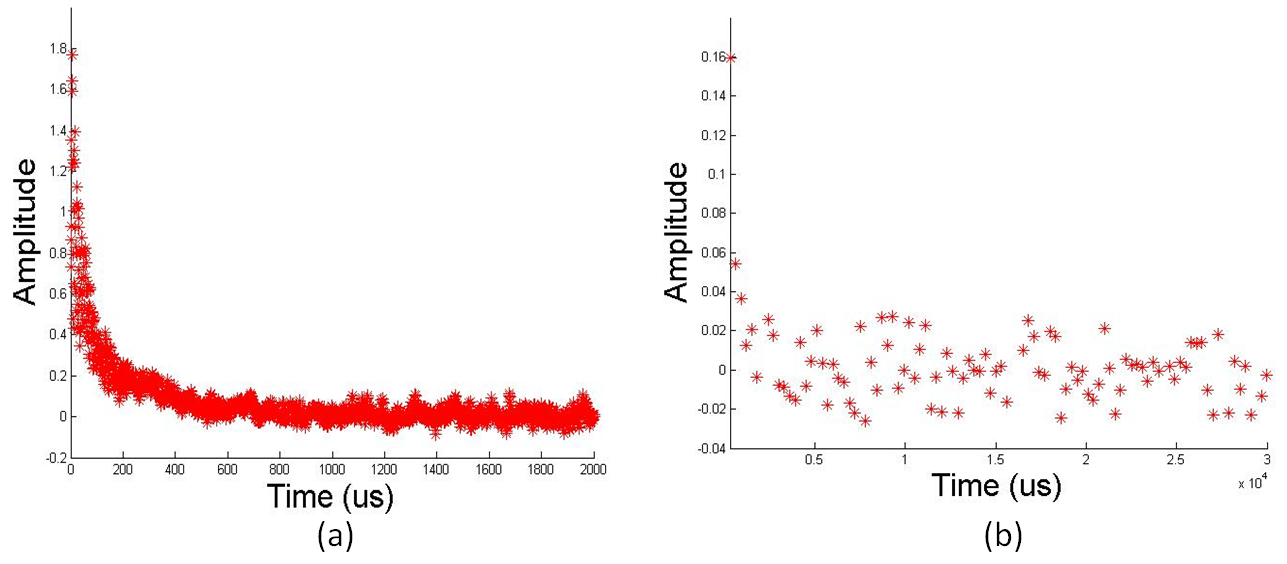Asphaltene Contents Prediction in Crude Oil by Low-Field NMR
- State Key Laboratory of Petroleum Resource and Prospecting, China University of Petroleum, Beijing, China
The contents of asphaltene can seriously influence the properties of crude oil and cause problems of sedimentation during storage, transportation, processing and refining. So, it is helpful to verify the contents of asphaltene.
Asphaltene behave fast relaxation which is difficult to be detected by conventional low-field NMR. [1] With the development of NMR instrument, it is possible to detect components with short T2 relaxation time about 10 micro-second.
In this experiment, we use FID and CPMG pulse sequence [2] . The dead time of FID pulse sequence is 15 micro-second, we assume it contains the information of asphaltene, as shown in figure 1(a). However, when the CPMG echo time is 300 micro-second, the information of asphaltene is almost lost, as shown in figure 1(b). By combining those two measurements, the contents of asphaltene can be inferred within a margin of error.

